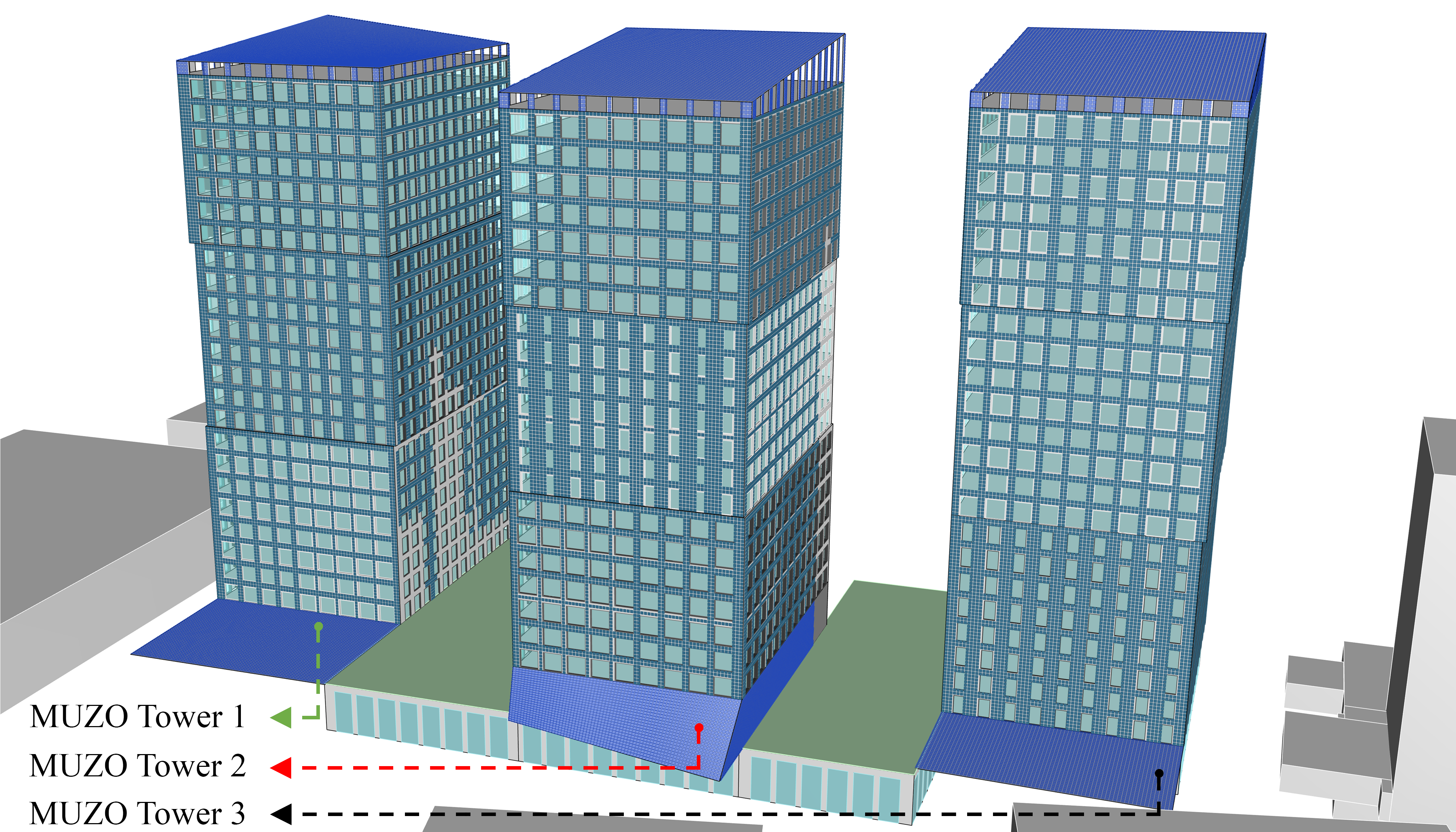Urbanization forces cities to increasingly densify, the big challenge is to do that with high-rise buildings that are self-sufficient. PhD candidate Berk Ekici devised a smart design evaluation method to find the optimal balance between energy efficiency, living comfort, photovoltaic and agriculture - even before construction.
Densification creates more living and office space in the city, but it is difficult to make these densely populated areas self-sufficient – which is the big challenge of the 21st century. Shading from higher-lying buildings causes increasing use of light and heating on lower-lying floors, while higher parts of the buildings need more cooling. ‘Open’ agriculture is difficult in a densely built-up city if there are only closed facades. We therefore have to design better, says Berk Ekici. ‘Buildings of the future must be self-sufficient in electricity, food, heat and water. To achieve this, we have to design buildings in such a way that they can make optimal use of daylight, harvest rainwater and generate energy,’ says Ekici. ‘Artificial Intelligence (AI) can help us align all those things as efficiently as possible.’
Playing with parameters
In the computer it is possible to play with parameters such as floor heights, overhangs, glazing type and the shape of the building. By relating the data from the simulations to the performance of a building, an AI algorithm can learn to find the optimal one. For each design problem, the algorithm can adjust its search behavior to choose the best solution from billions of possibilities. ‘Going through the enormous numbers of design parameters would take about 17 years of work, using only simulations. A machine learning algorithm can do it in a few weeks.’
Case study
Ekici developed with his colleague Cemre Cubukcuoglu from the Design Informatics Chair an optimization tool (“Optimus”). Using the Optimus with the AI method proposed by Ekici to optimize the performance of self-sufficient high-rises it can go in seconds through hundreds of design parameters. He tested it in a case study on the Europoint towers in Rotterdam.
Because the incidence of light is not identical everywhere, he divided the three towers of this high-rise complex into multiple zones. His research in the end comprised nine optimization tasks, from ground level to roof, each of which requires a specific design assignment.
AI helps select best design options
Illustrations show that this creates a completely different appearance of the building. If it were up to the algorithm, the uniform marble surface would disappear and the complex would have a varied facade design with recesses and bulges. The roof would be sloped for a higher yield from the solar panels. Blinds and other building additions help to regulate sunlight on lower floors.
The optimization also provides a more efficient arrangement of functions in the building. For example, it makes sense to position solar panels high in a building. A vertical farm gets a place in the lower parts, because it runs on artificial light. ‘For 1800 residents in three towers, two farming floors can provide 66 tons of lettuce according to the algorithm, with 47.2 percent self-sufficiency in energy’, he shows.
Perhaps the most important benefit is that design decisions are made transparent, says Ekici. ‘AI allows us to compare and select the best among hundreds of thousands of design options. That is a big step forward in performance optimization of self-sufficient high-rises.’
Published: June 2022
More information
- Berk Ekici defends his thesis 'Towards Self-Sufficient High-Rises: Performance Optimisation using Artificial Intelligence' on 27 June.
- His staff page can be found here.
- PhD thesis 'Towards Self-Sufficient High-Rises: Performance Optimisation using Artificial Intelligence'.

B. (Berk) Ekici
- B.Ekici-1@tudelft.nl
-
His staff page can be found here.

